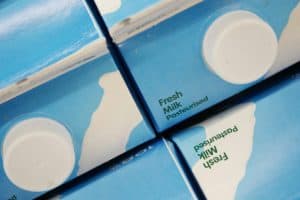In the food industry, maximizing the shelf life of products is crucial for maintaining quality, ensuring safety, and reducing waste. One of the key factors in achieving extended shelf life is the integrity of food packaging seals. High-quality food seals play a pivotal role in protecting food from external contaminants, preserving its nutritional value, and maintaining its freshness. This article explores the importance of high-quality food seals in maximizing shelf life and highlights the innovative leak testing method as a means of ensuring seal integrity.
The importance of seal integrity
Barrier against contaminants
High-quality seals act as a barrier against physical, chemical, and biological contaminants. By preventing the entry of microorganisms, oxygen, and moisture, these seals help in maintaining the food in its desired condition for a longer period.
Preservation of nutritional value and freshness
Effective sealing helps in preserving the nutritional value and freshness of food by minimizing exposure to air and other elements that can accelerate spoilage. This is especially important for perishable items like fruits, vegetables, meats, and dairy products.
Technological advancements in food sealing
Vacuum sealing and modified atmosphere packaging (MAP)
Vacuum sealing and MAP are technologies that significantly extend the shelf life of food products. Vacuum sealing removes air from the package, while MAP replaces it with gases like nitrogen or carbon dioxide, which slow down the deterioration process.
Smart packaging
Smart packaging technologies integrate indicators and sensors into food seals and packaging, providing real-time information about the condition of the food, such as temperature changes or breaches in seal integrity. This technology enables proactive measures to preserve shelf life and ensure food safety.
Ensuring high-quality seals
Material selection
The selection of appropriate sealing materials is critical. Materials must be chosen based on their barrier properties, compatibility with the food product, and suitability for the sealing process. High-quality materials ensure that the seal maintains its integrity throughout the product’s shelf life.
Precision in the sealing process
Precision in the sealing process is vital. Equipment must be calibrated and maintained to ensure consistent pressure, temperature, and duration of the seal. This uniformity is essential for creating seals that are strong and defect-free.
Testing for seal integrity
Leak testing
The bubble-leak testing method is an effective way to assess the integrity of food seals. This non-destructive testing involves submerging the sealed package in water and applying pressure. The presence of bubbles indicates a leak, pinpointing weaknesses in the seal. This method is invaluable for ensuring that food packages are perfectly sealed and ready for the market.
Other testing methods
In addition to bubble-leak testing, there are other methods such as dye penetration tests and vacuum decay tests. Each method has its advantages and is chosen based on the type of product, packaging materials, and specific requirements of the food industry.
The impact of high-quality seals on shelf life
Reduction in food waste
By ensuring that food products remain fresh for longer periods, high-quality seals play a significant role in reducing food waste. This not only benefits the environment by minimizing the amount of food discarded but also contributes to economic savings for both consumers and manufacturers.
Consumer confidence
High-quality seals directly impact consumer confidence. When consumers purchase food products, they trust that the packaging will protect the product and keep it fresh until consumption. Strong, intact seals are a visible indicator of quality and safety, enhancing brand reputation.
Challenges and solutions
Balancing cost and quality
One of the challenges in ensuring high-quality seals is the cost associated with advanced sealing technologies and materials. However, the investment in quality sealing solutions is justified by the reduction in spoilage, waste, and the potential for increased sales through consumer trust.
Continuous innovation
The food packaging industry must continue to innovate to address the evolving needs of food preservation. Ongoing research and development into new materials, technologies, and testing methods are essential for advancing the quality of food seals and, by extension, maximizing shelf life.
High-quality food seals are critical in the effort to maximize the shelf life of food products. Through the use of advanced technologies such as vacuum sealing, MAP, and smart packaging, along with rigorous testing methods like leak testing, the food industry can ensure that products remain fresh, safe, and nutritious for as long as possible. As the industry continues to evolve, the focus on maintaining seal integrity will remain paramount, with ongoing innovation playing a key role in meeting the challenges of food preservation. The result is not just extended shelf life but also reduced waste, improved consumer confidence, and a stronger bottom line for food manufacturers and retailers.




